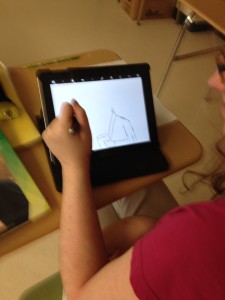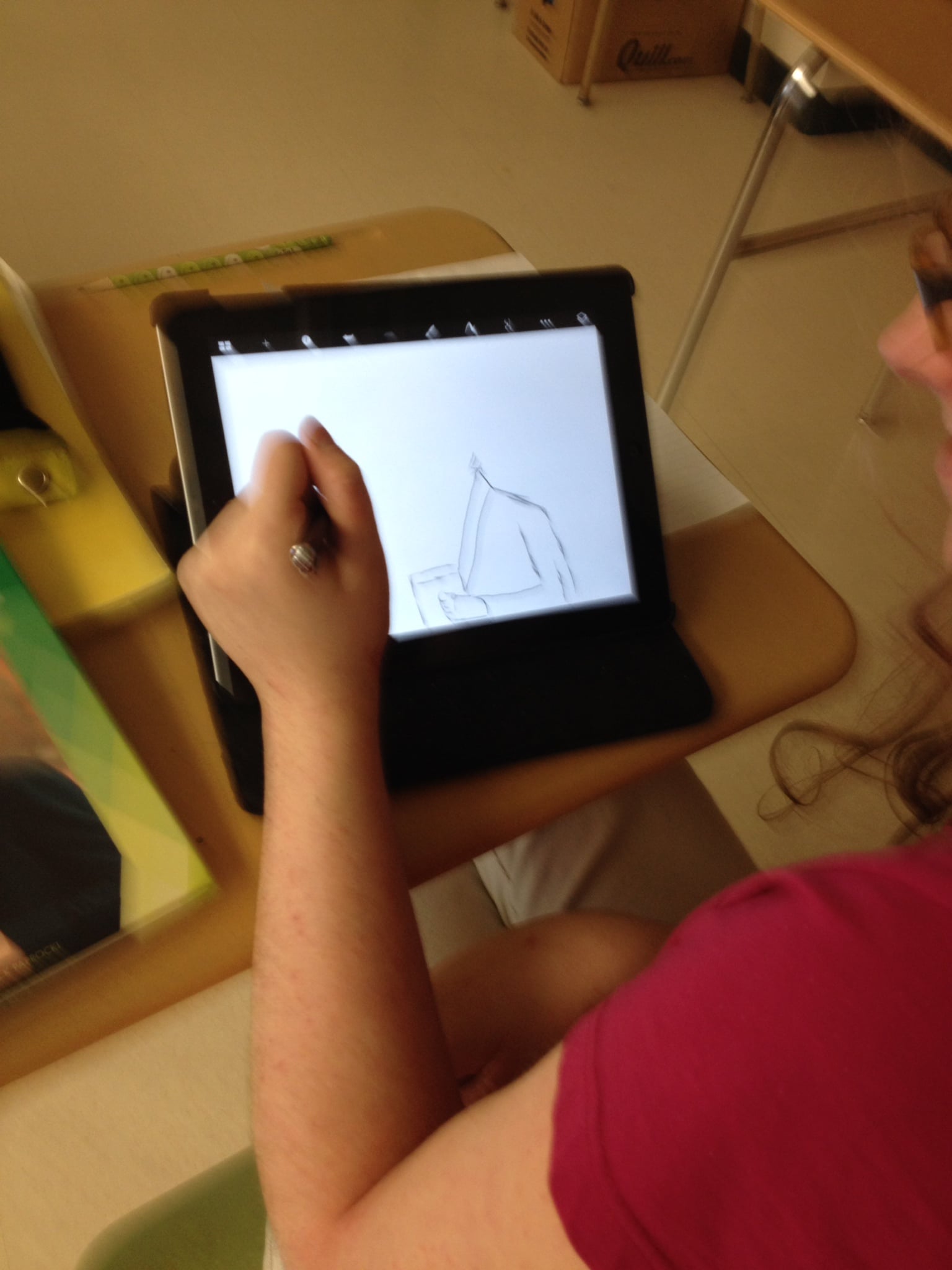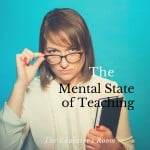 What if the future of learning is not measuring student achievement in high stakes standardized testing? What if, instead, the future of learning is in the magic of a great game? Ever since the 1983 “A Nation at Risk” report on the American education system, policymakers have consistently insisted that more and more high stakes testing is the answer to raising student achievement. Recently, as educators and policymakers realized that it would be worth it to create more rigorous common standards nationwide, those standards have already been overshadowed by the implementation of even more high stakes standardized tests– even before teachers, administrators, students and parents have had a chance to adjust to the new standards. Tests may provide endless reams of data (though not necessarily accurate), but how do they match up to the real lives of our students and how they actually learn?
What if the future of learning is not measuring student achievement in high stakes standardized testing? What if, instead, the future of learning is in the magic of a great game? Ever since the 1983 “A Nation at Risk” report on the American education system, policymakers have consistently insisted that more and more high stakes testing is the answer to raising student achievement. Recently, as educators and policymakers realized that it would be worth it to create more rigorous common standards nationwide, those standards have already been overshadowed by the implementation of even more high stakes standardized tests– even before teachers, administrators, students and parents have had a chance to adjust to the new standards. Tests may provide endless reams of data (though not necessarily accurate), but how do they match up to the real lives of our students and how they actually learn?
Game designer and researcher Jane McGonigal noted in a recent appearance at the ASCD Conference in Los Angeles that American children will now spend approximately 10,000 hours gaming by the time they are 21 years old. That is equivalent to the amount of hours they would spend in their classrooms if they had perfect attendance, kindergarten through senior year. Research shows that gaming – especially digital gaming – has become so much a part of our culture that 92% of two year olds are playing digital games. Games have changed the way kids and adults think, solve problems, and approach challenges. In fact, gamers spend 80% of the time failing in whatever game they are playing – yet they want to keep trying and keep learning how to achieve. Do our students feel that same motivation in school?
Photographer Phil Toledano has an amazing photo essay of portraits of gamers as they play. Take a moment to look through the essay at the expressions of determination, focus, triumph, and pure exhilaration on the faces of these humans engaged in gaming. Do we often see these kinds of expressions on the kids in our classrooms? How intensely do our students engage with learning while they are in school or doing schoolwork at home? How motivated are they to keep solving problems and continue learning, even when they fail? (And how often do we even let them fail and continue to try again no matter how long it takes?) By substituting higher and higher stakes testing into curriculum in place of creative, project-based learning, the focus in school is now that ever-elusive mark of standardized achievement (for both students and teachers). While lawmakers prefer the cold, hard data produced by standardized assessments, educators express doubts that this process is beneficial to the learning process. Even though new Common Core standards introduce more critical thinking skill sets, the end result is still mandated standardized tests. Now that it’s Spring, our students spend their days in school prepping for these tests, but then they go home to hours of gaming where they enter dynamic, exciting, imaginary worlds of quests, conquering aliens, professional sports, and mining for treasure. But why does their reality in school have to be so different from their gaming experiences?
One reason their two worlds remain so separate and that gamification in education is slow to catch on is because of the negative profile gaming has in American media and society. Gaming is blamed for everything from mass killings to shortened attention spans. McGonigal noted in her presentation that there is reliable research that shows gaming can negatively affect a child’s attention span and capacity for empathy. On the other hand, there is just as reliable research that shows gaming can lead a child to be happier, a better decision-maker and critical thinker, as well as better at interacting with teams and facing challenges. So how can good scientific research come to these opposing conclusions about gaming? McGonigal’s own research is about this very question. What she finds is that the two conclusions are possible because there are two different modes of gaming.
The first mode is escapist gaming. Fairly self-explanatory, this mode of gaming is where the gamer doesn’t see games as connected with his or her reality and uses them to escape. Brain and behavioral researchers call this self-suppression: where the person games to avoid negative feelings or thoughts. In this kind of gaming, a cycle emerges where the more challenging life gets, the more time the person will escape into games. Because the game isn’t being used to solve problems, it’s not translating to handling problems successfully in real life. On the other hand, playing with purpose is how all gamers start, but those who continue with this experience what researchers call self-expansion. This is when we try to expand our lives or experiences and actively seek new skills, relationships or challenges. The more gamers purposefully play, the more what they learn translates to real life and the less the end up gaming. Our culture, however, tends to negate the purposeful play by focusing only on the escapism – and so kids don’t have any positive influence to keep them from moving from their initial purposeful play into escapism. McGonigal’s research finds that because gaming becomes so separate from kids’ real lives, what they most seek to escape is school. Consequently, the longer students stay in school, the less engaged they become as they seek escape.
So how do we engage kids with their learning as much as they engage with their gaming? Gaming IS learning, and if we can guide that gaming into purposeful play, it can have great potential for kids in school and in their lives. Gallup conducted a poll several years ago looking for which levers, or triggers, build engagement for kids. The strongest responses that the most engaged kids responded to were:
- School is committed to building my strengths
- I have the opportunity to do my best every day
- In the last 7 days, I have received recognition or praise for doing good work
- In the last month, I volunteered my time to help others
School may not meet these levers, but gaming meets everyone one of them. In gaming, kids encounter:
- Constant reinforcement towards improvement
- Wins every day with opportunities to gain status and position
- Consistent positive feedback
- Doing good (the least focused-on lever, but could be the most important). In fact, in gaming, gamers have frequent opportunities to good for teammates, for their quest, and for society as a whole.
Gaming has produced new and dynamic ways to participate in the betterment of society. Gamers collaborating for scientific and medical research have hit the news several times in the past year. In 2008, HIV researchers at the University of Washington began engaging gamers in a game called FoldIt, designed to help solve some really challenging biology problems. Within 10 days of the start of one project , 250,000 gamers from around the world, spanning all ages and races, solved one of the biggest mysteries in biological science: how proteins fold into three-dimensional forms. The gamers working together, despite having no formal science education, proved faster and more effective than a super computer. The Science Game Center shows the massive amount of opportunities gamers have to participate in scientific research around the world. There are also social impact games. Minecraft, the fastest growing game worldwide, has led the way with a partnership with the UN Habitat program in which students can use its Block by Block game to redesign their communities. Games For Peace seeks to bridge conflicts through gaming. And Games For Change engages people in social and environmental justice. Gaming is the future of negotiating our world, so how can we better integrate it with the reality of our education system?
Our education system was formed in an era where industrialization and standardization was the key to success and vast opportunity the factory- and manufacturing-based economy of the early 20th century. But while our society, and the future that awaits our students, becomes more and more diversified, technological, and individualized, our education system continues to succumb to more and more standardization. We could stick our heads in the sand and pretend that gaming is anathema to learning and education. Or we could realize that every game is a learning game, and gaming has the potential to infect our students’ learning with energy, creativity, internal motivation, and collaboration skills. If parents and teachers are coached in the potential of gaming, how to make it purposeful play, and how to engage with their students – they could pass on the vast potential of gaming as a positive influence in their kids’ and students’ learning. What if the assessments that mattered in school were based on achieving new levels in a game that requires teamwork, or earning badges for finishing quests or solving puzzles? The Educator’s Room writers Linda Darcy and Whitney Kaulbach have some excellent articles about gaming in the classroom.
Gaming doesn’t have to become escapist – it can be increasingly purposeful if we seize the future of learning now.
In Part 2 of this series on gamification and gaming, we will explore how gaming can be the disruptive innovation that education needs.





An impressive share! I have just forwarded this onto a co-worker who had been doing a little research on this. And he actually bought me lunch due to the fact that I stumbled upon it for him… lol. So let me reword this…. Thank YOU for the meal!! But yeah, thanx for spending some time to discuss this issue here on your blog.